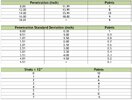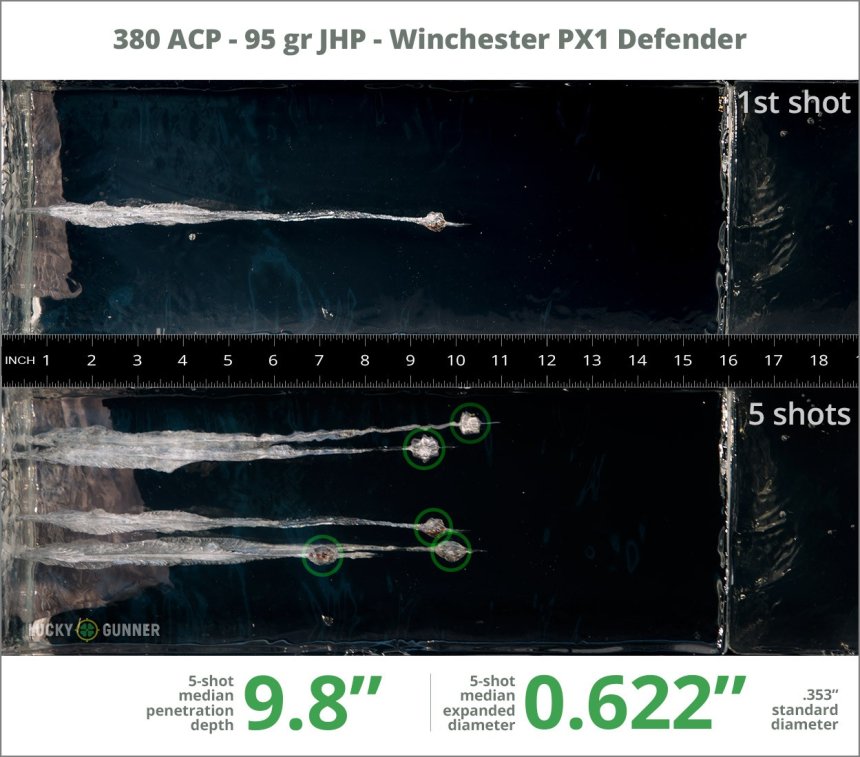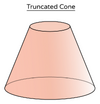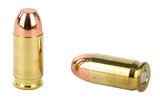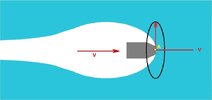This is more academic obfuscation.
Here is a Round - a specific round, the
.380 ACP 95 gr. Winchester PDX1.
From a Barrel - a specific barrel, the 3.5" Bersa FireStorm.
Here is that specific round, fired from an even shorter barrel, through heavy clothing:
(throwing out the short round)
Here is the Expansion - a specific expansion, from that shorter barrel:
0.63"
Here is the Penetration - a specific penetration, from that shorter barrel:
10.0"
So, even in a large, 10" torso, what will this bullet fail to destroy along its path?
And, upon exiting, what else will a 9mm bullet destroy, besides something collateral down range?
Oh, for Pete's sake.
What occurs in the Clear Ballistics Gel product is not what will occur in human soft tissues or in shear-validated 10% ordnance gelatin; conclusions drawn from the tests cited above are meaningless and without any value.
First, in order to correctly represent the terminal ballistic behavior of projectiles passing through human soft tissues, it is necessary to use a test medium that duplicates the material responses of human soft tissues accurately. The Clear Ballistic Gel product used in the Lucky Gunner tests cited above is not capable of performing in such a manner because it is not dynamically equivalent to human soft tissues.
A comprehensive approach to establishing the dynamic equivalence of soft tissue simulants to human soft tissues is the use of an EOS (equation of state) that allows the comparison of the physical and acoustic properties of soft tissue simulants. These equations take the form of—
U
S =
co + Su
P
—where the equation’s intercept value,
co, is the medium's temperature-dependent internal sonic velocity (in km/s), the equation’s slope, S, is a first-order derivative of the medium’s bulk modulus (K) expressed in N/m², u
P is particle velocity (in km/s), and U
S is the shock Hugoniot velocity (in km/s) of the wave front propagated through the medium ahead of the projectile. In order to be dynamically equivalent to the human soft tissues that they are intended to simulate, the slope and intercept values of the EOS of the materials being used as soft tissue simulants must be very close to one another.
The EOS for typical human soft tissues are:
Human Adipose Tissue: U
S = 1.465 + 1.781u
P
Skeletal Muscle: U
S = 1.547 + 2.136u
P
In close agreement with the EOS of human soft tissues above, the two proven soft tissue simulants have an EOS of:
H
2O: U
S = 1.483 + 1.867u
P
10% Type 250-A ordnance gelatin: U
S = 1.513 + 2.024u
P
The EOS of the Clear Ballistic Gel product differs significantly from that of both human soft tissues and the two currently proven soft tissue simulants:
Skeletal Muscle: U
S = 1.433 + 1.44u
P
While the intercept value,
co, of the Clear Ballistic Gel product is slightly below that of both the human soft tissues and the human soft tissue simulants, the slope of the Clear Ballistic Gel EOS, 1.44, is considerably lower than that of all of the other EOSs meaning that test data obtained using the Clear Ballistics Gel product as a test medium will deviate
significantly from that obtained in both human soft tissue and the two proven simulants.
Second, the density of the Clear Ballistics Gel product is much lower (@ 0.824g/cm³) than the range of densities observed in human soft tissues, 0.950 ≥
ρ ≤ 1.065 g/cm³, with adipose tissue being at the low end of the range (0.950) and skeletal muscle at the upper end (1.065) as discussed in
Basics of Biomedical Ultrasound for Engineers, Azhari H (2010). According to the Bernoulli equation, P = ½
ρV², besides projectile velocity (V), the only physical property of a material that determines the magnitude of dynamic pressure is the density (
ρ) of the test medium. The dynamic pressure produced at impact is what drives projectile expansion by overcoming the yield strength of the lead alloy forming the core of the bullet. If resultant dynamic pressure produced by a test medium differs greatly from that seen in human soft tissues, then expansion will also differ (significantly) resulting not only in a larger or smaller expanded diameter, but also a correspondingly different maximum terminal penetration depth.
For example, according to
Empirical relationships between acoustic parameters in human soft tissues, Acoustical Society of America, Mast TD, (2000), the aggregate density of the human body is 1.043 ± 0.042 g/cm³. Using that density, 1.043 g/cm³, for a JHP impacting at 1,100 fps, the dynamic pressure would be 631.015 MPa.
However, that very same JHP, fired at 1,100 fps into the Clear Ballistics Gel product, would produce a much lower dynamic pressure of 498.520 MPa (approximately 21% less!) which would result in much less expansion than the same JHP would exhibit if fired at 1,100 fps in human soft tissues.
The result?
Less projectile expansion resulting in proportionately greater terminal ballistic penetration depth which is exactly what is seen in all testing conducted with the Clear Ballistics Gel product. Relying upon the Clear Ballistics Gel product for the test above, it is impossible to determine with any accuracy the depth to which the Winchester .380 ACP 95-grain PDX1 JHPs would penetrate in human soft tissues.
Finally, there are other serious issues that render results obtained in the Clear Ballistics Gel product dubious such as the post-impact combustion (resulting from adiabatic compression of the volatiles seen in CBG testing) and excessive projectile rebound (up to 25% of the length of the permanent cavity) that routinely occurs in tests with the Clear Ballistics Gel product, but that is a topic for another day.

www.defensivecarry.com

www.defensivecarry.com




